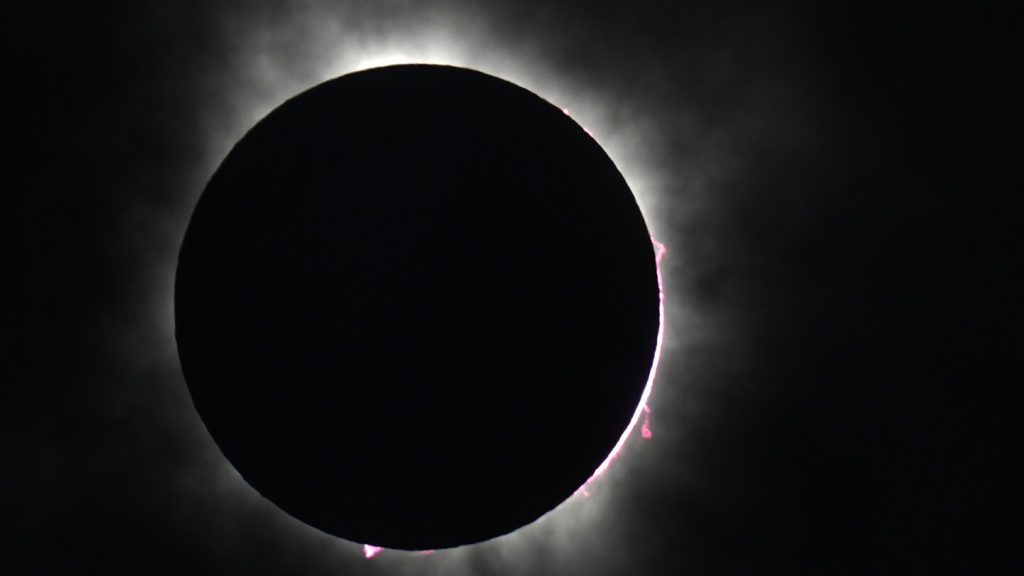Millions of people across North America witnessed a total solar eclipse on Monday, as the moon blocked out the sun in a path of totality that stretched from Mazatlán, Mexico to Newfoundland, crossing 15 U.S. states and totaling 44 million people. People gathered in various locations such as state parks, city rooftops, and small towns to witness this rare celestial event. While those not in the direct path still witnessed a partial eclipse, the lucky ones in the path of totality experienced complete darkness as the moon transformed the sun into a fiery crescent.
The eclipse made its first stop on land in Mazatlán, Mexico, casting the city’s beaches into darkness before moving northeast towards Eagle Pass, Texas. Total solar eclipses occur around the world every 11 to 18 months, but it is not common for them to cross paths with millions of people. The last total solar eclipse visible in the U.S. was in 2017, and the next coast-to-coast spectacle is not expected until 2045. This made the 2024 eclipse a highly anticipated event for astronomy enthusiasts and casual observers alike.
While some areas experienced clear skies and perfect viewing conditions, others had to contend with clouds obscuring the eclipse. In Manor, Texas, the partial eclipse was visible as the sun and moon crossed atop the New Sweden Evangelical Lutheran Church steeple. The visual spectacle of the moon partially covering the sun captivated onlookers and created a memorable moment for those who witnessed it firsthand. The Associated Press Health and Science Department, supported by the Howard Hughes Medical Institute’s Science and Educational Media Group, provided coverage of the eclipse and its significance.
Overall, the total solar eclipse of 2024 captured the awe and wonder of millions of people across North America as they experienced the rare phenomenon firsthand. From the stunning sight of the moon blocking out the sun to the darkness that enveloped those in the path of totality, the eclipse offered a unique opportunity to witness the beauty and power of the natural world. As scientists continue to study and understand solar eclipses, events like these serve as reminders of the vastness and complexity of the universe, sparking interest and curiosity in people of all ages.
The eclipse served as a reminder of the cyclical nature of celestial events and the importance of taking the time to appreciate the wonders of the universe. For many, it was a once-in-a-lifetime opportunity to witness a total solar eclipse in all its glory. As the next coast-to-coast spectacle is not expected until 2045, those who were lucky enough to witness the 2024 eclipse will cherish the memories and photos they captured of this extraordinary event. The celestial show brought people together, igniting a sense of wonder and curiosity about the mysteries of the cosmos and our place within it.


